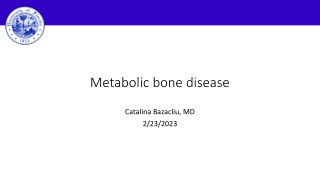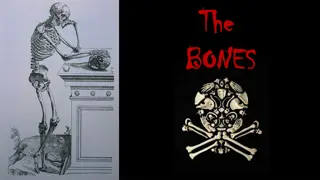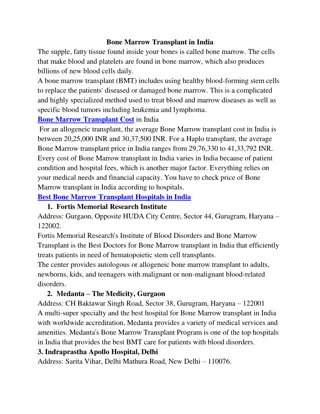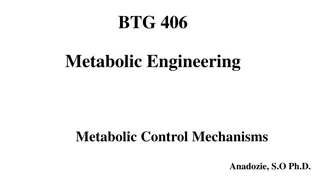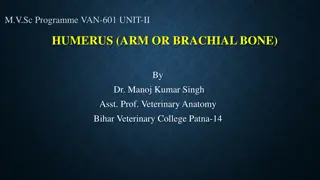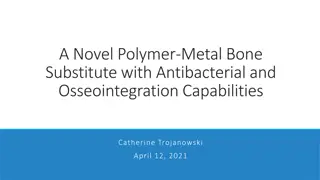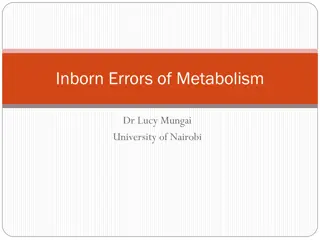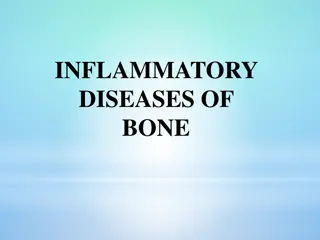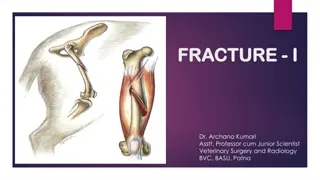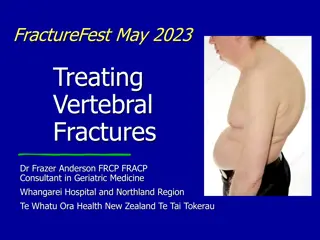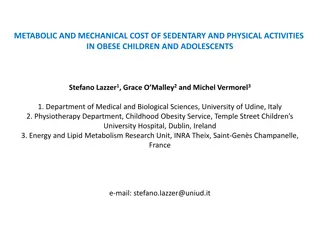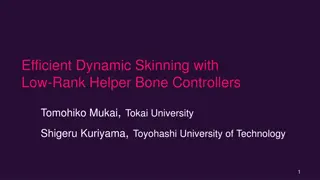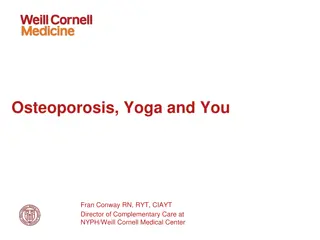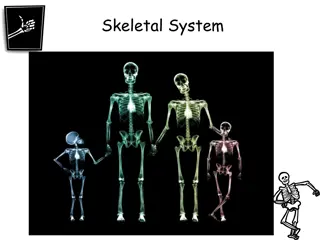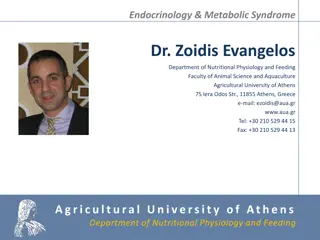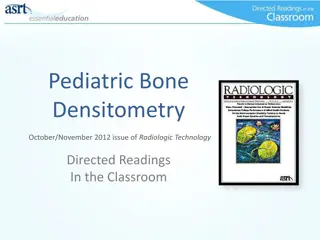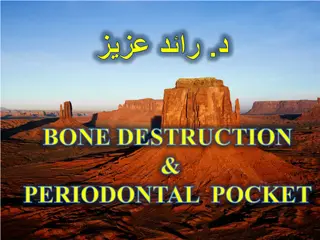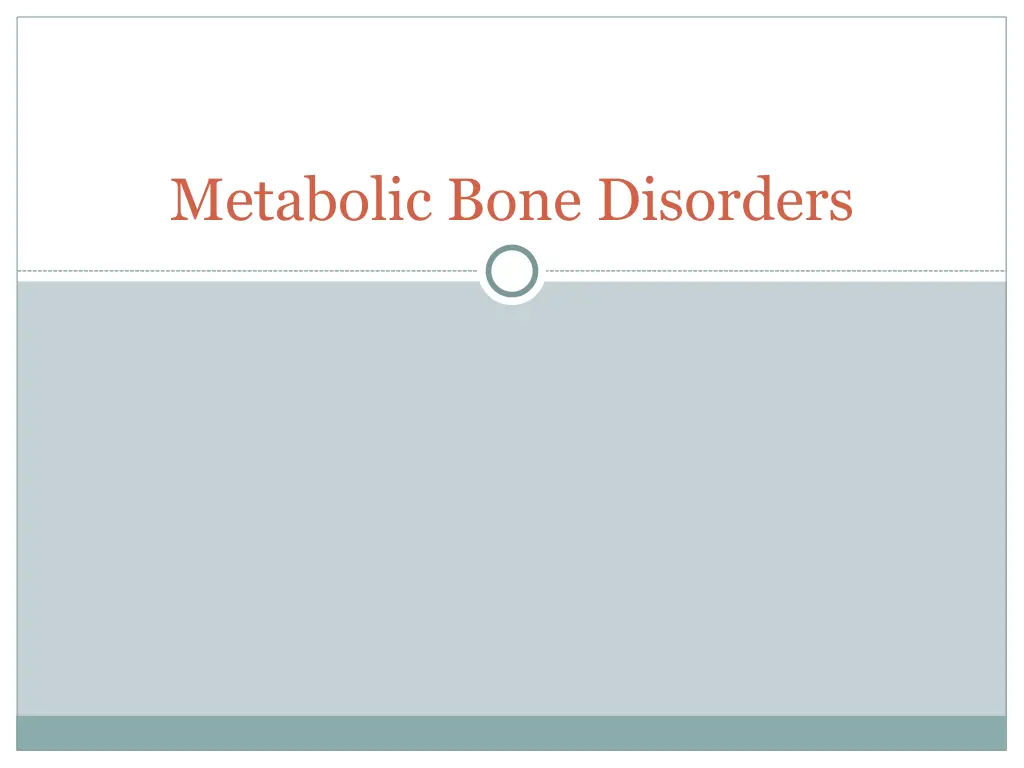
Understanding Bone Metabolism and Disorders
Learn about metabolic bone disorders, the role of orthopedic surgeons, and the importance of bone metabolism. Discover how bone is a living structure influenced by factors like calcium, phosphorus, hormones, and diet. Explore bone structure, plasma levels of calcium and phosphorus, and the function of parathyroid hormone in maintaining bone health.
Download Presentation

Please find below an Image/Link to download the presentation.
The content on the website is provided AS IS for your information and personal use only. It may not be sold, licensed, or shared on other websites without obtaining consent from the author. If you encounter any issues during the download, it is possible that the publisher has removed the file from their server.
You are allowed to download the files provided on this website for personal or commercial use, subject to the condition that they are used lawfully. All files are the property of their respective owners.
The content on the website is provided AS IS for your information and personal use only. It may not be sold, licensed, or shared on other websites without obtaining consent from the author.
E N D
Presentation Transcript
Orthopedic Surgeons and Bone Orthopedic surgeons have to deal with all types of bone : healthy or diseased; and that s why they have to know about bone metabolism Bones in the body protect vital organs Bones give support to muscles and tendons Bone may become weak in certain conditions
Bone is a living structure There is a continuous activity in bone during all stages of life There is continuous bone resorption and bone formation as well as remodeling That means bone is not only for protection and support but its contents play an important part in blood homeostasis Many factors are involved in this process
Bone Metabolism Bone metabolism is controlled by many factors: Calcium Phosphorus Parathyroid gland Thyroid gland Estrogen Glucocorticoid hormones Intestinal absorption Renal excretion Diet Vitamin D Sun exposure
Bone Structure Bone is formed by Bone matrix : which consists of 40% organic : collagen type1 (responsible for tensile strength) 60% Minerals : mainly Calcium hydroxyapatite, Phosphorus, and traces of other minerals like zinc Cells in bone : osteoblasts, osteoclasts, osteocytes
Plasma levels Calcium : 2.2-2.6 mmol/l Phosphorus : 0.9-1.3 mmol/l Both absorbed by intestine and secreted by kidney in urine Alkaline phosphatase : 30-180 units/l Is elevated in bone increased activity like during growth or in metabolic bone disease or destruction Vitamin D level : 70-150 nmol/l
Parathyroid Hormone (PTH) Production levels are related to serum calcium levels PTH secretion is increased when serum calcium is low Action of PTH: it increases calcium levels in the blood by increasing its release from bone & increase absorption from the intestine & and increase reabsorption from the kidney ( also increase secretion of phosphorus )
Hyperparathyroidism Primary : Adenoma of the gland Secondary : as a result of low calcium Tertiary : as a result of prolonged or sustained stimulation = hyperactive nodule or hyperplasia
Calcitonin Is secreted by C cells of thyroid gland Its secretion is regulated by serum calcium Its action is to cause inhibition of bone resorption and increasing calcium excretion by this it causes lowering of serum calcium
Bone Strength Bone strength is affected by mechanical stress which means exercise and weight bearing Bone strength gets reduced with menopause and advancing age Reduced bone density on X rays is called Osteopenia Osteopenia is also a term used to describe a degree of reduced bone density, which if advanced becomes Osteoporosis
Bone Density Bone density is diagnosed at current time by a test done at radiology department called : DEXA scan DEXA is ( Dual Energy X ray Absorbtionometry ) However: increased bone density does not always mean increased bone strength, as sometimes in Brittle bone disease ( which is a dense bone ) is not a strong bone but fragile bone which may break easily
Disorders to be discussed Rickets Osteomalacia Osteoporosis Hyperparathyroidism
Rickets & Osteomalacia - Different expressions of the same disease which is : Inadequate mineralization - Rickets affects : Areas of endochondral growth in children - Osteomalacia : All skeleton is incompletely calcified in adults
Rickets & Osteomalacia * Causes - Calcium deficiency - Hypophosphataemia - Defect in Vitamin D metabolism nutritional underexposure to sunlight intestinal malabsorption liver & kidney diseases
Rickets: Symptoms and Signs Child is restless, babies cry without obvious reason Failure to thrive Muscle weakness In severe cases with very low calcium: tetany or convulsions Joint thickening especially around wrists and knees Deformity of limbs, mostly Genu varum or Genu Valgum Pigeon chest deformity, Rickety Rosary, craniotabes
X Ray Findings in Rickets Growth plate widening and thickening Metaphysial cupping Long bones deformities
Rickets & Osteomalacia Biochemistry Hypocalcaemia, Hypocalciuria High alkaline phosphatase
Osteomalacia Metabolic Bone Disorder in Adults : symptoms and signs Bone pain, mainly backache Muscle weakness Reduced bone density Vertebral changes : Bi-concave vertebra, vertebral collapse , kyphosis Stress fractures : Loosers zones in scapula, ribs ,pelvis, proximal femur
Rickets & Osteomalacia Treatment *Vitamin D deficiency - Rickets adequate Vitamin D replacement sun exposure correct residual deformities - Osteomalacia Vitamin D + Ca fracture management correct deformity if needed
Osteoporosis Decreased bone mass : decreased amount of bone per unit volume ( and this causes reduced density ) Mineralisation is not affected Mainly post-menopausal and age related
Osteoporosis: Primary and Secondary Primary Osteoporosis : Post menopausal Senile
Post menopausal Osteoporosis Due to rapid decline in estrogen level This results in increased osteoclastic activity Normal bone loss usually 0.3% per year Post menopausal bone loss 3% per year
Risk Factors in Post menopausal Osteoporosis Race Hereditary Body build Early menopause Smoking/ alcohol intake/ drug abuse ? Calcium intake
Senile Osteoporosis Usually by 7th to 8th decades there is steady loss of at least 0.5% per year It is part of physiological manifestation of aging Risk factors in Senile Osteoporosis : - Male menopause - Dietary : less calcium and vitamin D and protein - Muscle weakness - reduced activity
Clinical Features of Osteoporosis Osteoporosis is a Silent disease Osteoporosis is Serious due to possible complications :mainly fractures Osteoporosis does not cause pain usually Osteoporosis causes gradual increase in dorsal kyphosis Osteoporosis leads to loss of height Osteoporosis is not osteoarthritis; but the two conditions may co-exist
Osteoporotic Fractures They are Pathological fractures Most common is osteoporotic compression fracture ( OVC #s ) Vertebral micro fractures occur unnoticed (dull ache) Most serious is hip fractures Also common is wrist fractures ( Colles fracture )
Secondary Osteoporosis Drug induced : steroids, alcohol, smoking, phenytoin,heparin Hyperparathyroidism, hyperthyroidism, Cushing's syndrome, gonadal disorders, malabsorption, mal nutrition Chronic diseases : RA, renal failure, tuberculosis Malignancy : multiple myeloma, leukemia, metastasis
Disuse Osteoporosis Occurs locally adjacent to immobilised bone or joint May be generalised in in bed ridden patients Awareness of and attempts for prevention are helpful
Osteomalacia vs. osteoporosis Osteomalacia Any age Post-menopause, old age Pt. ill Not ill General ache Asymptomatic till # Weak muscles Normal Looser zones Alkaline ph increase PO4 decrease Osteoporosis Nil Normal Normal
Prevention of Osteoporosis Prevention of osteoporosis should start from childhood Healthy diet, adequate sunshine, regular exercise, avoidance of smoking or alcohol, caution in steroid use At some time in the past there was a recommendation of HRT ( Hormone replacement Therapy ) for post menopausal women ? And men; but now this is discontinued
Management of Osteoporosis Drugs Exercise Management of fractures
Drug Therapy in Osteoporosis Estrogen has a definite therapeutic effect and was used extensively as HRT but cannot be recommended now due to serious possible side effects Adequate intake of calcium and vitamin D is mandatory Drugs which inhibit osteoclast activities : e.g. Bisphosphonates like sodium alendronate FOSAMAX , BONVIVA Drugs which enhance osteoblast activities : bone stimulating agents like PROTELOS, FORTEO
Exercise in Osteoporosis Resistive exercises Weight bearing exercises Exercise should be intelligent to avoid injury which may lead to fracture

